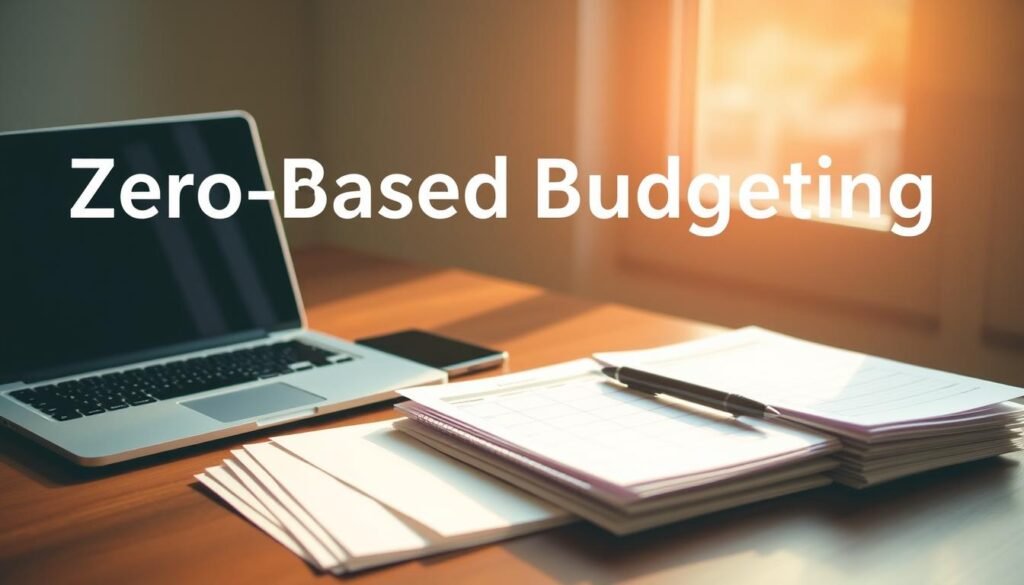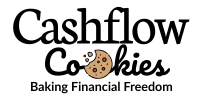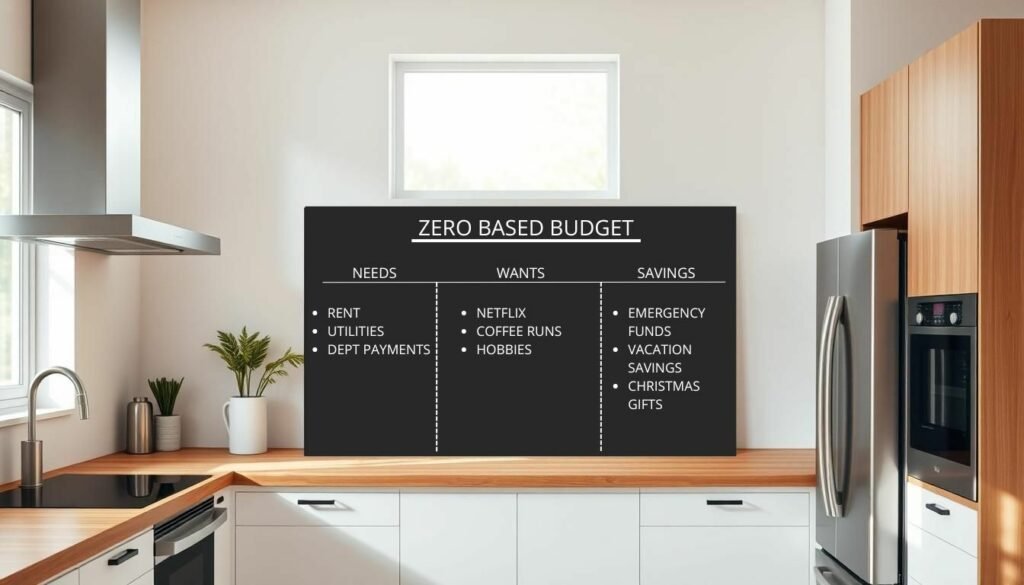Remember that time you tried baking cookies without a recipe? 
Traditional budgeting often feels like eating stale bread – it gets the job done, but leaves you craving something better. That’s where zero-based budgeting comes in. Think of it as your favorite recipe book: every dollar gets a specific job, just like every ingredient in a cake. Your income? That’s your flour, sugar, and eggs. Your expenses? Those are your mixing bowls and oven timers.
Here’s the secret sauce: nothing gets wasted. At the end of the month, your income minus expenses should equal zero. Not because you’re broke, but because every dollar’s working hard – whether it’s covering bills, building savings, or funding that weekend coffee habit. Experts like Beau Zhao at NerdWallet call this “giving your money purpose” – and it’s surprisingly flexible, like adjusting spice levels in your grandma’s famous chili.
I’ve burned my share of financial “cookies” over the years. But this approach helped me finally track where my money was actually going (turns out, $12 avocado toast adds up faster than I thought). The best part? You don’t need fancy tools – just a notebook, your monthly income, and the willingness to prioritize what matters most.
Key Takeaways
- Every dollar gets a specific purpose, like ingredients in a recipe
- Income minus expenses equals zero – no leftover money or guesswork
- Encourages mindful planning for bills, savings, and personal goals
- Helps identify unnecessary spending (goodbye, impulse snack aisle!)
- Flexible enough to adapt to changing incomes or priorities
- Recommended by financial experts for better money control
Understanding Zero-Based Budgeting Fundamentals
Imagine planning a week’s meals with only the ingredients in your fridge. No mystery leftovers, no expired yogurt lurking in the back. That’s zero-based budgeting – your financial pantry reorganization.
Your Money’s Recipe Book
This method works like a chef’s prep list:
- Income = Total ingredients: Combine all money sources (salary, side gigs)
- Expenses = Recipe steps: Assign dollars to needs (rent), wants (streaming), and savings
- Zero leftovers: Every cent gets used – even $5 goes to debt or fun money
Traditional methods often let unused funds “roll over” like stale bread. Zero-based budgeting? You bake fresh every month. As NerdWallet notes, it’s “intentional spending” – no dollar hides in the pantry.
Why This Isn’t Your Grandma’s Budget
Unlike envelope systems tracking cash, this approach adapts to modern life. Freelancer with uneven pay? Student loan payments changing? Start from zero each cycle. Fidelity compares it to “rebuilding your budget like a new menu each season” – perfect when life’s ingredients keep shifting.
My friend Jamie thought budgeting meant deprivation. Then she tried assigning dollars to specific jobs: “$40 for cat food” felt better than “$40 vanished somehow.”
Advantages and Disadvantages of Zero-Based Budgeting
Ever stared into your fridge wondering how last week’s groceries vanished so fast? 
Key Benefits for Individual Finances
Think of this approach as a financial magnifying glass. You’ll spot those $9.99 streaming services you forgot to cancel (looking at you, 2018 yoga app subscription). Investopedia notes it “forces you to justify every expense like a chef verifying pantry staples” – no more mystery spending crumbs!
Real-life wins include:
- Finding $120/month in unused subscriptions (that’s 144 avocados yearly!)
- Building savings systematically like layering cake tiers
- Preventing “budget ghosts” – dollars that disappear without explanation
Potential Challenges and Considerations
This method isn’t instant ramen – it’s more like homemade sourdough. Irregular incomes can feel like baking at high altitude: adjustments needed. Fidelity warns: “Fluctuating pay requires creative ingredient substitutions.”
| Pros | Cons |
|---|---|
| Clear expense tracking | Weekly check-ins required |
| No financial leftovers | Harder with variable income |
| Customizable monthly “recipes” | Initial setup takes 1-2 hours |
My neighbor Marcus – a freelance photographer – nearly quit after his first month. Now? “I treat lean months like gluten-free baking – different ingredients, same delicious results.” 
Step-by-Step Guide to Implementing Your Zero-Based Budget
Ever set a kitchen timer only to burn your cookies anyway? 

Gather Your Dough (Income)
Start by combing through your money sources like sifting flour. Collect pay stubs, side gig cash, and that $20 from returning soda cans. Apps like YNAB automatically track this for you – no sticky notes required. My cousin missed $300/month from dog-walking until she did this!
Preheat Your Financial Oven (Expenses)
Now sort your costs like organizing spices:
- Essential ingredients: Rent, utilities, debt payments
- Flavor enhancers: Netflix, coffee runs, hobby supplies
- Future feasts: Emergency funds, vacation savings
Pro tip: Review bank statements to spot sneaky charges – I once found a $15/month app I hadn’t opened in 2 years!
Taste-Test and Adjust
Budgeting isn’t “set it and forget it” like a slow cooker. Compare planned vs actual spending weekly using a simple table:
| Category | Planned | Actual |
|---|---|---|
| Groceries | $400 | $427 |
| Entertainment | $75 | $113 |
See where you overspent? Maybe next month add $30 to groceries and trim entertainment. Like adjusting oven temperature, small tweaks prevent burnt edges.
Remember: Your first attempt might feel like lumpy batter. That’s normal! With practice, you’ll whip up budgets smoother than buttercream frosting.
Zero-based Budgeting vs. Traditional Budgeting
Picture reheating yesterday’s pasta versus cooking a fresh meal. 

Recipe Revival vs. Leftover Logic
Traditional budgets work like seasoning adjustments: “Last month’s $300 groceries seemed okay – let’s add $20 for inflation.” It’s quick, but risks preserving stale habits (looking at you, gym membership from 2019).
Zero-based budgeting demands full recipe rewrites:
- Every expense justifies its spot – like auditioning ingredients
- Old subscriptions get chopped like wilted herbs
- Savings get measured precisely – no “pinch of this, dash of that”
A NerdWallet study found people using this method saved 23% more annually. Why? No automatic rollovers for zombie expenses that outlive their usefulness.
Choosing Your Financial Chef’s Hat
This table reveals when each method sizzles or fizzles:
| Traditional | Zero-Based |
|---|---|
| Best for stable incomes | Ideal for changing priorities |
| Quick weekly updates | Monthly deep clean required |
| Risk of budget creep | Tight control over dollars |
Choose zero-based if you:
- Crave granular control (every sprinkle counts)
- Need to slash unnecessary costs (bye-bye duplicate streaming services)
- Want savings to rise like perfect soufflés
My barista friend switched methods last year: “Turns out I was spending more on oat milk than actual groceries!” 
Mastering Zero-based Budgeting for Financial Control
Think of your budget like a favorite soup recipe – what works in summer needs tweaking when winter hits. 
Your Budget’s Secret Spice Rack
When surprise expenses pop up like uninvited dinner guests, try these flavor-saving tricks:
- Reuse last month’s “leftovers”: Shift $20 from entertainment to car repairs like repurposing roasted veggies into soup
- Taste-test priorities: Temporarily reduce dining out funds to cover medical bills – it’s like substituting honey when sugar runs out
- Grow your safety net: Treat emergency funds like yeast – start small (5% of income) and watch it rise gradually
My friend Lena discovered her budget needed more “spice” after adopting a rescue dog. 
Financial coach Ramit Sethi says it best: “Great budgets bend without breaking, like perfect al dente pasta.” Whether you’re facing rising rent costs or planning a career shift, regular check-ins help your money stretch further than last year’s sweatpants.
Remember: Your financial plan should fit you like a favorite apron – adjustable ties, stain-resistant, and ready for messy moments. However life changes, your customized approach keeps every dollar working smarter, not harder.
Conclusion
Think of your money as a well-stocked pantry – every spice jar and baking staple has its place. That’s the magic of zero-based budgeting: no dusty cans of “mystery funds” cluttering your shelves. You’ve now got the recipe to make each dollar work harder than a stand mixer on high speed.
Whether you’re tracking income with a spreadsheet or sorting expenses by category, remember: flexibility is your secret ingredient. Traditional methods might feel like following a boxed cake mix, but this approach lets you create your masterpiece. Found $50 extra this month? Assign it to savings like sprinkling chocolate chips into cookie dough.
Yes, you’ll need to taste-test your plan monthly – maybe shift funds between groceries and gas money. But that’s how you avoid financial burnt edges! As my yoga-teacher-turned-budget-pro friend says: “Money flows better when you give it clear directions, like traffic lights for your wallet.”
Ready to preheat your financial oven? Start tomorrow by writing down one income source and three expenses. Before you know it, you’ll be baking up savings goals and roasting unnecessary costs. The first step’s simpler than scrambling eggs – and far more rewarding. Let’s get cooking!
The magic of zero-based budgeting? No dollar left behind. But what if I told you some of those dollars could grow? Imagine taking that $50 ‘miscellaneous’ category and turning it into $75 with smarter swaps…
That’s where frugality shines.
🍃 Dive into my favorite gentle saving strategies here:
Frugal Living for Beginners: Save Money Without Sacrificing Life’s Sprinkles
FAQ
How is zero-based budgeting method different from regular monthly budgets?
Think of it like baking from scratch 
Won’t tracking every penny take too much time?
It’s like meal prepping—the first week feels intense, but soon you’ll move faster than a TikTok chef 
What if I have irregular income or surprise expenses?
This method actually shines here! You’re the sous-chef—adjust ingredient portions monthly. Build a “buffer” category for fluctuations and prioritize emergency savings (your financial first-aid kit 
Can I still save for big goals like vacations?
Absolutely! It’s like setting aside cookie dough for later 
How do I handle fixed costs like rent or car payments?
These are your recipe’s non-negotiable base ingredients 
What’s the biggest mistake beginners make?
Forgetting to budget for joy 









